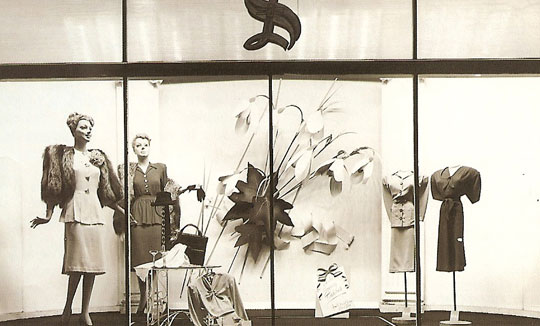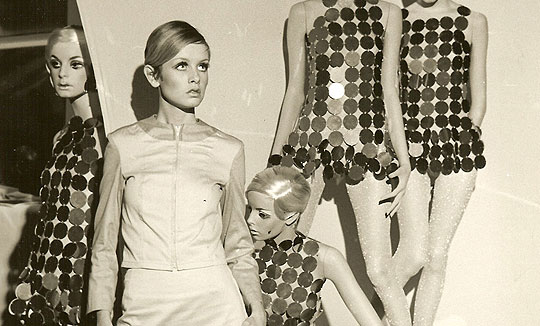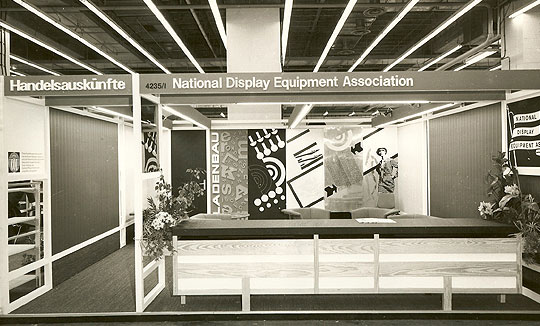Tel: 01883 348911 |
||
Things were different in 1947. The Second World War had been over for barely two years and the country was still in the grip of its aftermath. There were power cuts, fuel shortages, food rationing and the coldest winter of the century to contend with. People queued for hours for coal and some resorted to burning furniture to keep warm. Against this backdrop, it might seem a little odd that a small group of "shopfitting display sundriesmen" should feel the need to start a trade association. But it was because of that very situation that they needed an organisation to lobby Government on their behalf. There were severe shortages of timber, metals and acrylic sheet and licences were required before some materials could be obtained at all. So, on 17th September 1947, the Inaugural General Meeting took place at Grosvenor House, Park Lane, London and The National Display Equipment Association was born. The minutes of that meeting confirm that considerable time was spent discussing the membership fee, which was set at a rate of 2/6d per £100 of invoiced sales. Over 65 years later, the subscription rate is 20 per cent less than in 1947! The issues raised in those early days were predominantly government related and sometimes very complex, such as the inconsistent interpretation of Purchase Tax rates across the country. Members called for a standardised rate and the Association negotiated successfully with the authorities on their behalf. Sales of display figures and busts suffered severely from a crippling tax rate of 125 per cent compared with workroom models, which were not subject to any tax. The Association argued with the Treasury that any figure or bust used as a display prop, rather than for general sale, should be recognised as a tool of the trade and therefore exempt from tax. Members were delighted when the Chancellor of the Exchequer announced in his Budget speech that these items would indeed be exempt from tax. Timber continued to be in short supply and so serious was the supply of plywood that the Association had to convince the Board of Trade that an allocation of this material was essential to enable the industry to function. They agreed to permit the Association to issue licences itself on behalf of the civil service. By the late 1950s the country was on its feet again and the Association moved into a new era. In 1958 we started our own exhibition, Display Market Week. 15 members displayed their wares in bedrooms at the Waldorf hotel in London. Each year the show grew and by the end of the swinging sixties it was filling the entire Great Room and Ballroom at Grosvenor House on Park Lane. By 1972 every London Hotel had been outgrown and the Association made the brave step of moving the show to Olympia and renaming it InterShop. Again it thrived until 1974 when the miners strike, a rail strike and the three-day week, during which all display lighting was banned, saw the show go ahead but lit only by Olympia’s antiquated generators. It was the beginning of the end, and in 1977 it amalgamated with Shopex, a show the Association supported until its demise along with the Maxwell empire in 1992. In the 1960s the Association started helping members to export. In 1966 it organised a group of 26 British exhibitors, with support from the Board of Trade, at the first EuroShop exhibition in Düsseldorf, and has been back to every EuroShop since. At the most recent fair in February 2014 we arranged grants of £45,000 for 30 British exhibitors. In 1994 we were approached about a new shopfitting show in Dubai to be called ArabShop. We went on to exhibit and promote it to the UK market for 12 years.
In 1973 the Association moved into its own offices and a year later changed its name to Shop and Display Equipment Association to reflect the increased importance of “shop equipment” within the industry. During the 1960s and early 70s, the Association had concentrated on organising exhibitions and had time for little else. But the appointment of an enthusiastic young Director in 1975 allowed the Association to become much more proactive, developing a range of services designed to bring members more business. One of these was InfoLine, a telephone information service through which retailers and designers could source retail display equipment. It is still in operation today. In 1976 the Association launched its first “members’ discount scheme” in conjunction with BUPA. Today the scheme offers exclusive discounts on everything from trade exhibitions and publications to stationery, computers and commercial vehicles. The business insurance scheme alone has saved members thousands of pounds. In 1977 the Association launched its newsletter, Shoptalk, giving members a more stylish means of communication. At first it appeared somewhat irregularly, but in the last few years it has become a mainstay of our communication with members. Further publications include the annual PR Planner listing over 200 retail, shopfitting and display publications together with publishing dates of forthcoming features on the industry.
The desktop publishing revolution enabled the Association to produce more sophisticated publications in-house. The arrival of an Apricot computer with its revolutionary 'Windows' operating system in 1985 was a revelation. Soon there was a laser printer too. Up to 50 letters a year started landing on members’ desks covering a multitude of subjects. Members still receive these mailings, although they are now sent by email. The Association’s premier publication first appeared in 1980 as a 32 page Catalogue of Shopfittings and Display printed at a cost of a few hundred pounds “borrowed” from the exhibition budget. It soon evolved into a professionally designed full colour publication of which the Association is justifiably proud. Today, it boasts a circulation of 8,000 which saturates the retail and design sectors and brings members a continuous stream of valuable sales leads. In 1997 a new retail exhibition appeared on the UK scene and was welcomed with great enthusiasm by the Association and the industry. It became known as Retail Interiors and for several years SDEA sponsored it and exhibited with great success before it eventually changed hands and folded. By 1998 it was clear that the Association should have a website to act as an online Directory. It was launched in time for EuroShop 1999 and gave us a worldwide presence for the first time. In 2000 the Association bought the freehold of the office building it had occupied since 1983 and in 2003/4 a major refurbishment of the interior gave the staff a decent working environment for the first time. Recognising that the one thing all members need is a constant supply of sales leads, the Association developed an email sales lead service to supplement the telephone InfoLine. Then in 2006 a new 'Meet the Buyer' event was launched. It sold out within days and was a great success. Another was arranged in January 2007 and again it sold out. Since then the event has moved into London's West End, been rebranded as 'Connections' and become an established annual event. More networking events followed including the popular Christmas Lunch and, of course, the Annual General Meeting, Presentation and Lunch. More than 65 years on, members' requirements may have changed, but the need for the Association is every bit as important as it was in those early days and SDEA now offers an exceptional package of sales leads, savings and services that meet and exceed members’ expectations.
|
 |
|
|
Shop and Display Equipment Association
24 Croydon Road, Caterham, Surrey CR3 6YR Tel: 01883 348911 Fax: 01883 343435 email:enquiries@sdea.co.uk
|
||




